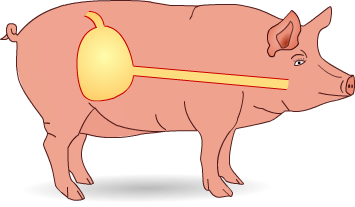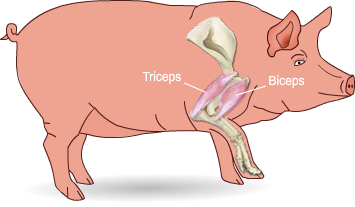Previous MiniLab Screen
Print MiniLab
Next MiniLab Screen
Preferences
Exit
About
Preferences
Return organ by:
Name
Description
Both
Number of wrong organ placements:
Narration Rate:
1.0
Some sample text to read.

Copyright 2023 Expandable Mind Software, LLC
All Rights Reserved
All Rights Reserved
Version 5.3.1
Loading...

Close Media Window

Close Extensions Window






Peristalsis is a series of rhythmic contractions and relaxations of the smooth muscle tissue within the digestive system. This action moves food through the tubular organs of the digestive tract. To observe peristalsis, click and drag the food to the mouth of the pig.



The skeleton not only provides shape, support, and protection, but it also works with our muscular system to enable movement. Skeletal muscles usually function in opposing pairs called antagonistic muscles. Click on the biceps of the pig to observe this action.
xx







